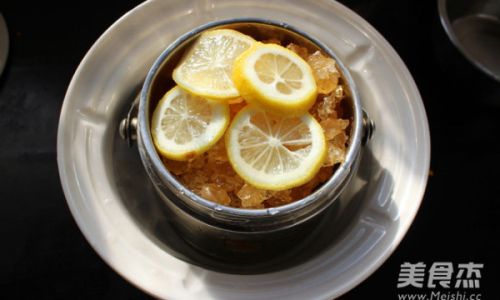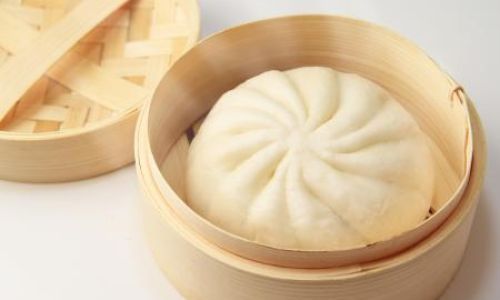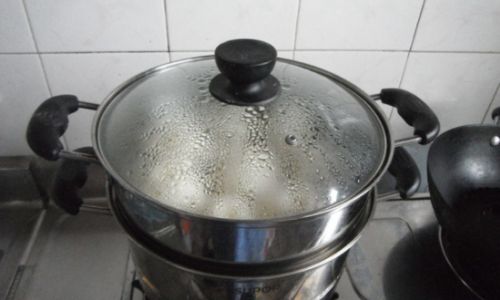Introduction
Rock sugar lemon stew, a beloved traditional remedy and dessert in many Asian cultures, combines the zesty brightness of lemons with the delicate sweetness of rock sugar. This golden elixir, often simmered for hours to achieve its signature syrupy texture, is revered for its soothing properties, especially during cold seasons or when seeking a natural boost for the immune system. Beyond its health benefits, this dish is a testament to the harmony of flavors—tangy, sweet, and subtly bitter—that dance on the palate. Whether enjoyed warm as a comforting drink or chilled as a refreshing treat, rock sugar lemon stew is a versatile culinary treasure. This article delves into the history, preparation, and nuances of crafting this timeless dish, ensuring even novice cooks can master its creation.
A Brief History and Cultural Significance
The origins of rock sugar lemon stew trace back centuries, rooted in traditional Chinese and Southeast Asian herbal practices. Lemons, rich in vitamin C and antioxidants, were historically valued for their ability to combat fatigue, aid digestion, and alleviate sore throats. Rock sugar, or bing tang in Chinese, derived from sugarcane or beet juice, was prized for its natural sweetness and perceived medicinal properties, such as moistening the lungs and soothing coughs. Together, these ingredients formed a synergistic blend, believed to balance the body’s energies and promote overall well-being.
In modern times, rock sugar lemon stew has transcended its medicinal roots to become a staple in households and cafes alike. It is often prepared during lemon harvests, when the fruit is at its peak, and stored in jars as a pantry staple. The dish’s popularity also stems from its simplicity—requiring minimal ingredients but yielding maximum flavor and health benefits.

Ingredients: Quality Matters
Creating exceptional rock sugar lemon stew begins with selecting the finest ingredients. Here’s a breakdown of the key components:
- Lemons: Opt for fresh, organic lemons whenever possible. Their thin skin and minimal wax coating ensure a purer flavor. Meyer lemons, with their sweeter profile, are ideal, but regular lemons work beautifully too.
- Rock Sugar: This unrefined, crystalline sugar is available in varying sizes, from small crystals to large chunks. Its mild sweetness complements the lemon’s acidity without overpowering it. Avoid white granulated sugar, as it lacks the depth of flavor and natural minerals found in rock sugar.
- Water: Use filtered water to prevent impurities from affecting the stew’s clarity and taste.
- Optional Additions: Some recipes incorporate ingredients like dried chrysanthemum flowers, honey, or ginger for added complexity. However, purists argue that simplicity is key to preserving the dish’s authentic character.
Preparation: Cleaning and Slicing
The journey to a flawless stew begins with meticulous preparation.
-
Cleaning the Lemons:
- Rinse lemons under warm water to remove dirt. For a thorough clean, scrub gently with a vegetable brush.
- To eliminate wax or pesticides (if non-organic), soak lemons in a solution of 1 tablespoon baking soda per 2 cups water for 15 minutes. Rinse thoroughly and pat dry.
-
Slicing Technique:
- Trim both ends of each lemon.
- Slice lemons into ¼-inch thick rounds. Thinner slices yield a quicker stew but may disintegrate during cooking; thicker slices retain their shape longer.
- Remove seeds using a paring knife or fork to prevent bitterness.
The Cooking Process: Patience and Precision
The magic of rock sugar lemon stew lies in its slow-cooked transformation. Follow these steps for optimal results:

-
Layering Ingredients:
In a heavy-bottomed stainless steel or ceramic pot, arrange lemon slices and rock sugar in alternating layers. Start with a lemon layer, followed by sugar, and repeat. This ensures even flavor distribution.
-
Adding Liquid:
Pour enough water to submerge the lemons by 1 inch. Avoid overfilling, as the mixture will reduce significantly.
-
Simmering:

- Bring the pot to a gentle simmer over low heat. Do not boil rapidly, as high heat can caramelize the sugar prematurely and impart a burnt taste.
- Stir occasionally with a wooden spoon to prevent sticking.
-
Monitoring the Stew:
- The initial simmering phase (1–1.5 hours) will soften the lemons and melt the sugar into a syrup.
- As the liquid reduces, the mixture will thicken and take on an amber hue. Adjust heat as needed to maintain a steady simmer.
- Total cooking time ranges from 3–4 hours, depending on lemon thickness and desired consistency.
Achieving the Perfect Consistency
The stew is ready when:
- The syrup coats the back of a spoon without dripping immediately.
- Lemon slices are translucent and tender, yet intact.
- The flavor balances tartness and sweetness without bitterness.
Tips for Success
- Avoid Aluminum Pots: The acidity of lemons can react with aluminum, leaving a metallic taste.
- Adjust Sweetness: If lemons are overly tart, increase rock sugar by 10–15%. For a less sweet stew, reduce sugar slightly.
- Preserve Color: Adding a pinch of salt during cooking can help retain the lemons’ vibrant yellow hue.
- Storage: Sterilize glass jars by boiling them for 10 minutes. Fill while hot, seal tightly, and refrigerate. The stew keeps for up to 3 months.
Health Benefits: More Than Just Flavor
Rock sugar lemon stew is celebrated for its holistic health advantages:
- Immune Support: High in vitamin C, it aids in fighting infections and reducing inflammation.
- Digestive Aid: Lemon’s citric acid stimulates bile production, aiding digestion.
- Respiratory Relief: The warm syrup soothes throat irritation and coughs.
- Hydration: When diluted with water, it serves as a flavorful way to increase fluid intake.
Serving Suggestions

- Warm Elixir: Mix 2–3 tablespoons of stew with hot water for a comforting drink. Add a cinnamon stick or fresh mint for aromatics.
- Iced Refreshment: Chill the stew and serve over ice with a slice of lemon.
- Dessert Garnish: Drizzle over vanilla ice cream, yogurt, or pancakes for a tangy-sweet twist.
- Cocktail Mixer: Combine with vodka, soda water, and a lemon wedge for a sophisticated cocktail.
Variations and Creative Twists
While tradition is revered, experimentation can yield exciting results:
- Ginger Infusion: Add 1-inch fresh ginger, sliced, during simmering for a spicy kick.
- Herbal Boost: Toss in dried chrysanthemum or goji berries for added antioxidants.
- Vegan Alternative: Substitute rock sugar with coconut sugar or maple syrup for a plant-based version.
Troubleshooting Common Issues
- Bitter Taste: Overcooking or unremoved seeds can cause bitterness. Ensure seeds are removed and avoid prolonged simmering beyond 4 hours.
- Sugar Not Melting: Break large rock sugar chunks into smaller pieces before cooking.
- Cloudy Syrup: Use filtered water and avoid stirring vigorously, which can introduce impurities.
Conclusion: A Labor of Love
Rock sugar lemon stew is more than a recipe—it’s a celebration of patience, tradition, and the alchemy of simple ingredients. Whether you seek a natural remedy, a culinary masterpiece, or a bridge to cultural heritage, this stew delivers. As you savor each spoonful, remember that its true magic lies not just in its flavor but in the care invested in its creation. So, gather your lemons, sugar, and time—and embark on a journey to craft a timeless elixir that nourishes body and soul.





0 comments